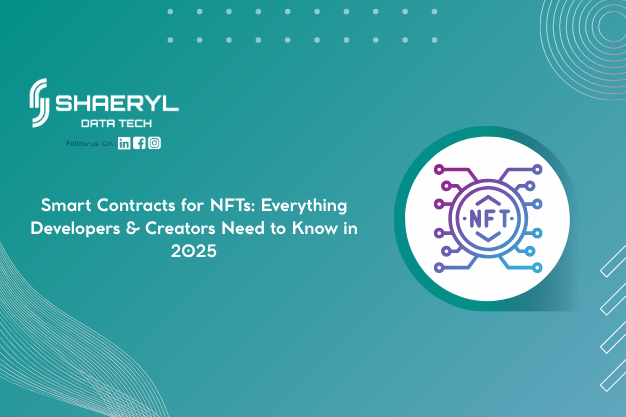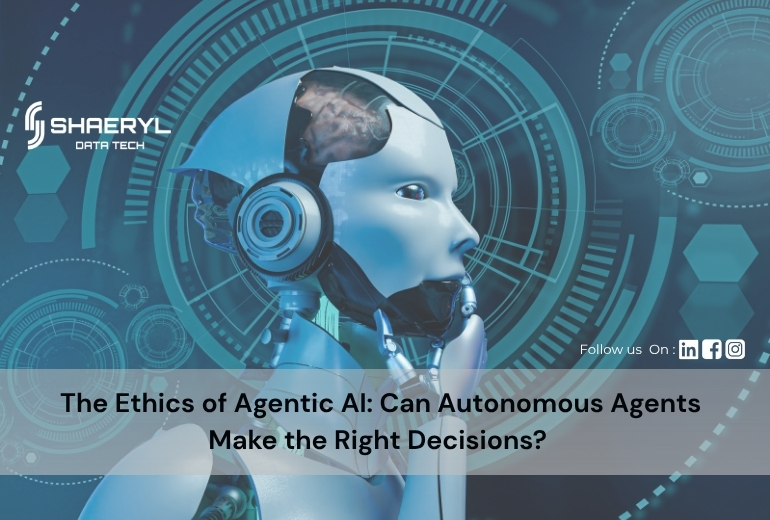In a world where speed, precision, and scale are the competitive edge, enterprises cannot afford to rely solely on traditional workflows. The future belongs to organisations that can unlock the full potential of AI—especially through agentic systems. This blog will help you understand how to build scalable agentic workflows that drive sustainable business growth.
Introduction: AI in the Enterprise—From Tool to Teammate
Over the last decade, artificial intelligence has evolved from a buzzword into a core component of business strategy. Enterprises initially adopted AI in fragmented ways—chatbots in customer service, recommendation engines in e-commerce, and analytics in business intelligence. But as AI capabilities mature, the paradigm is shifting from tool-based automation to agentic workflows—intelligent systems that can perceive, reason, and act autonomously across business functions.
Agentic AI goes beyond task automation. It involves the orchestration of intelligent agents that can:
- Plan and execute complex workflows
- Communicate with other agents
- Adapt to real-time feedback
- Make context-aware decisions
The result? Enterprises achieve higher throughput, reduced operational costs, and rapid scalability—all while improving accuracy and customer satisfaction.
What Are Agentic Workflows?
The Foundation of Agentic AI
At its core, an agentic workflow is a structured series of steps driven by intelligent agents—software entities capable of decision-making and independent action. These agents are:
- Goal-oriented: They work toward specific outcomes.
- Context-aware: They consider dynamic variables and constraints.
- Interoperable: They can communicate with APIs, software tools, and other agents.
- Self-optimising: They learn from past performance and improve over time.
Imagine an onboarding process for a new employee. A traditional workflow might involve dozens of manual steps—emailing HR, provisioning software, setting up payroll. An agentic workflow, by contrast, uses AI agents to proactively trigger each step, validate inputs, make decisions (e.g., based on role or department), and even follow up on delays—without human intervention.
Why Now? The Rise of Agentic AI in Enterprises
Several converging trends are accelerating the shift toward agentic workflows:
- Explosion of Generative AI Capabilities
Large Language Models (LLMs) and multimodal AI (like OpenAI’s GPT-4 or Google’s Gemini) have brought us to a point where AI can read, write, listen, summarise, interpret intent, and even reason like a human.
- Increasing API Accessibility
Nearly every tool used in enterprise tech stacks—from Salesforce to Jira—has an open API, enabling seamless agent-to-platform interaction.
- Demand for Efficiency at Scale
In the post-pandemic world, agility and cost efficiency are non-negotiable. Agentic workflows offer a path to sustainable automation without the heavy lifting of custom development.
- Workflow Fatigue
Employees are bogged down by repetitive tasks. Enterprises that automate intelligently can free up human creativity for high-impact decision-making.
Building Blocks of Scalable Agentic Workflows
- Identify the Right Use Cases
Start where agentic workflows deliver maximum ROI. Common starting points include:
- Customer support: AI agents handle triage, resolution, and escalation.
- Marketing automation: Agents personalise and schedule campaigns based on real-time data.
- Sales operations: Follow-up emails, CRM updates, and lead qualification can be handled autonomously.
- Procurement and finance: Agents validate invoices, process POs, and flag anomalies.
- Choose the Right Framework
Agentic AI requires orchestration across multiple tools and AI components. Choose from frameworks like:
- LangChain and AutoGPT for Python-based orchestration
- OpenAI Function Calling API for goal-directed planning
- ReAct framework (Reasoning + Acting) for more dynamic workflows
You’ll also need access to:
- An LLM (like OpenAI GPT-4 or Claude)
- A memory store (e.g. Redis or Pinecone)
- A vector database (for semantic search)
- APIs to your enterprise software (e.g. SAP, HubSpot)
- Data Infrastructure
Garbage in, garbage out. AI agents are only as good as the data they act upon. Ensure:
- High-quality structured data (CRM, ERP)
- Cleaned and tagged unstructured data (emails, documents, tickets)
- Secure, governed access controls
- Real-time data streams where needed
- Design for Modularity and Reusability
Each agent should:
- Be built for a single responsibility (e.g. “Email Responder Agent”)
- Use APIs to interact with other tools or agents
- Be interchangeable or callable by other agents
This modular design supports rapid iteration, debugging, and scaling.
- Human-in-the-Loop (HITL)
Not every decision should be made autonomously. For sensitive tasks (e.g., financial approvals, customer refunds), design workflows that include human review checkpoints before execution.
- Monitor and Optimise
Use dashboards to track:
- Agent decisions
- Workflow duration
- Error rates
- Escalation patterns
Build in feedback loops so agents learn from performance and user corrections.
Real-World Applications of Agentic Workflows
Supply Chain Management
An international logistics firm implemented AI agents to:
- Predict stock-outs using sales + weather data
- Auto-generate replenishment orders
- Notify warehouses and reroute deliveries
Result: 30% fewer stock-outs, 18% lower warehousing costs.
Sales Enablement
A SaaS enterprise deployed agentic workflows to:
- Auto-qualify leads using buyer intent signals
- Trigger customised demo invites
- Follow up post-call with summarised notes + next steps
Result: 22% increase in pipeline velocity within three months.
Finance & Procurement
A retail chain used AI agents to:
- Validate vendor invoices
- Cross-check against contracts and purchase orders
- Flag fraud patterns
Result: Saved £1.3M annually in overbilling and manual review costs.
Overcoming Common Challenges
Security and Compliance
Solution: Use Role-Based Access Controls (RBAC), encrypted API tokens, and audit logs. Agents must follow your enterprise-grade security protocols.
Over-Automation
Solution: Always include a fallback or human approval path. Don’t let agents make irreversible decisions without oversight.
Poor Prompt Engineering
Solution: Use tested prompt libraries. Build agents using prompt templates that include context, goals, constraints, and examples.

When you invest in building agentic systems, you unlock nonlinear value—productivity doesn’t just improve linearly, it compounds.
Conclusion: The Future Belongs to the AI-First Enterprise
The next generation of market leaders will not be the ones with the most employees or the biggest budgets—they’ll be the ones with the smartest workflows. Building scalable agentic systems is not just a technical upgrade; it’s a strategic shift.
Those who act now will be tomorrow’s benchmarks. Will that be you?
Ready to Begin?
We help enterprises design, build, and scale agentic workflows tailored to their needs.



